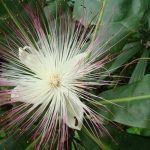The tangerine is a type of citrus fruit that is orange in color. Its scientific name varies. It has been treated as a separate species under the name Citrus tangerina or Citrus × tangerina, or treated as a variety of Citrus reticulata, the mandarin orange.[1][2] Citrus tangerina is also treated as a synonym of Citrus deliciosa.[3] It is a group of orange-colored citrus fruit consisting of hybrids of mandarin orange varieties, with some pomelo contribution.
The name was first used for fruit coming from Tangier, Morocco, described as a mandarin variety.[4] Under the Tanaka classification system, Citrus tangerina is considered a separate species. Under the Swingle system, tangerines are considered a group of mandarin (C. reticulata) varieties.[5] Some differ only in disease resistance.[6] The term is also currently applied to any reddish-orange mandarin (and, in some jurisdictions, mandarin-like hybrids, including some tangors).[7][8]
Tangerines are smaller and less rounded than the oranges. The taste is considered less sour, as well as sweeter and stronger, than that of an orange.[9] A ripe tangerine is firm to slightly soft, and pebbly-skinned with no deep grooves, as well as orange in color. The peel is thin, with little bitter white mesocarp.[10] All of these traits are shared by mandarins generally.
Peak tangerine season lasts from autumn to spring. Tangerines are most commonly peeled and eaten by hand. The fresh fruit is also used in salads, desserts and main dishes. The peel is used fresh or dried as a spice or zest for baking and drinks. Fresh tangerine juice and frozen juice concentrate are commonly available in the United States.






